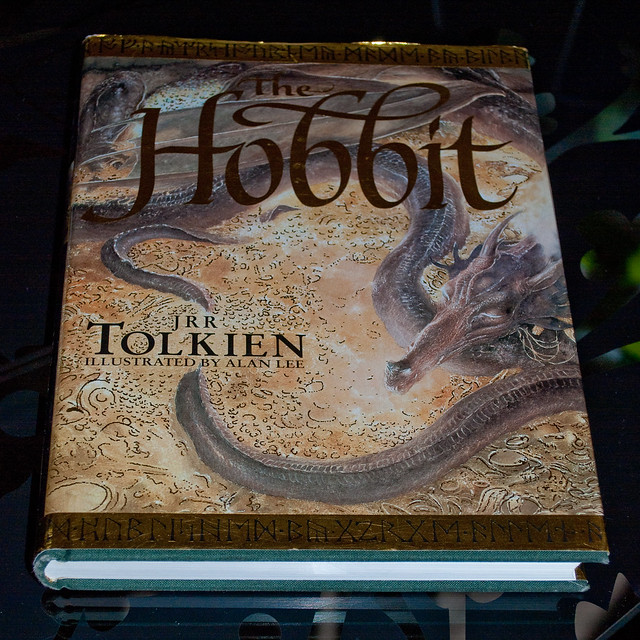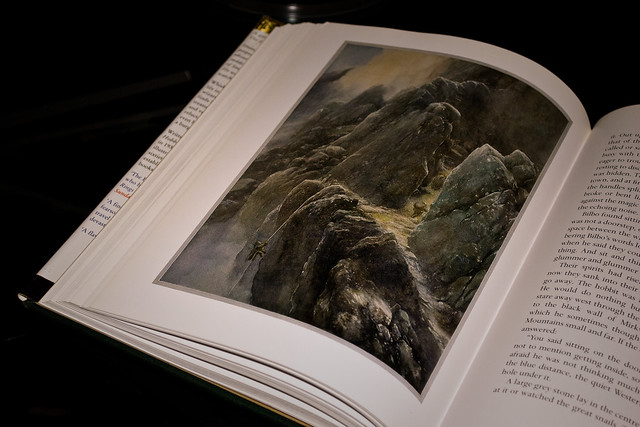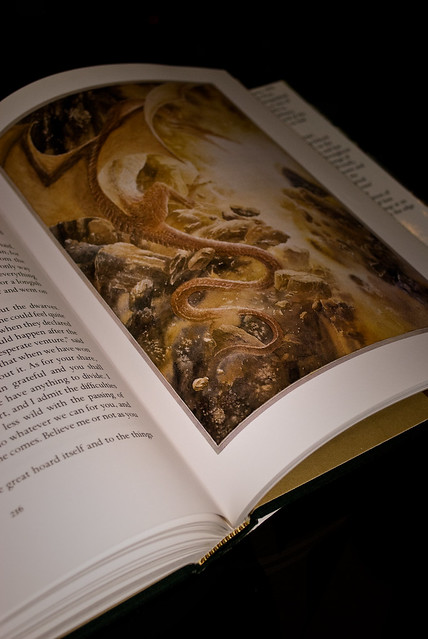
One of my favourite books is "the Hobbit". I read it as a child and have never let it go. I have five physical copies: three paperback copies with various covers, one French version (bought in Paris) and one wonderfully luxurious hardback copy that is illustrated by Alan Lee (pictured)... that I picked up in a charity shop in Bellshill for £2 (original price was £25)... a digital copy on my Kindle and an audiobook version from Audible on my iPod.
All seven copies are treasured to me... but if I were to save one if my house was on fire, it would be the hardback copy (my Kindle and iPod would be in my Manhattan Portage bag along with my iPad... which would be on my back as a flee my house with my family and pets in hand).

I love the hardback copy because of the wonderful illustrations and the overall quality of the presentation... it feels lovely to hold and is a pleasure to read... it is something to savour rather than to consume... it is a truly valued artefact.
When we consider the prophets of doom and their suggestions that physical media is dead... I think that's the key... tactile tangibility... and it is the power of artefact. It is where analogue can compete with digital... and prove these prophets wrong.
In the digital world... the device is the artefact because it has the tangibility. The iPod is the "thing". The Kindle is the "thing". The content on the device is simply that... content... intangible content. It has no mass.
Whereas with analogue... the artefact is the artefact... because it has, by it's very nature, mass and tangibility. The poster is the "thing". The album is the "thing". The book is the "thing". The content is part of the overall tangibility of the artefact... joined by the thoughtfulness of the packaging design, artwork, typography etc.
To use the analogy of the songbird and her cage... with digital, the artefact (the device) is the cage and the content is the songbird's song... whereas with analogue, both the cage and the songbird combine to form the artefact - the bird can be appreciated for her song and for her graceful appearance, and the cage can be appreciated for it's own aesthetic appeal.
This is then where writers, musicians and publishers can compete with comoditisation of their output solely as content... by making wonderfully tangible artefacts that can be appreciated in and of themselves.
Whilst content on the Kindle or iPod is suitable for consumption (you cannot argue against their convenience, for example)... true analogue artefacts are made to be savoured and appreciated... to be poured over and to be passed on... like a special watch.
In fact, a watch is another example of the success of analogue in a digital world... and note, I'm not talking about hands versus LCD... I'm talking about having and wearing a watch versus reading your time off a phone or computer screen. Time may be content but it is best and most effectively presented as an tangible analogue artefact (a watch or clock).
So the next time you hear someone express displeasure at the way digital is taking over from analogue, tell them about the power of artefact and how this need for tangibility is, in fact, an opportunity for writers, musicians and publishers to differentiate and shine.
It is an opportunity to compete... but it also provides the opportunity to combine and cooperate: the vinyl record with the mp3 download... the book with the PDF version... for example.
I strongly believe there is room for both. It's not an "or" but an "and" scenario... where convenient consumption can live with selective savouring.
Tx



No comments:
Post a Comment